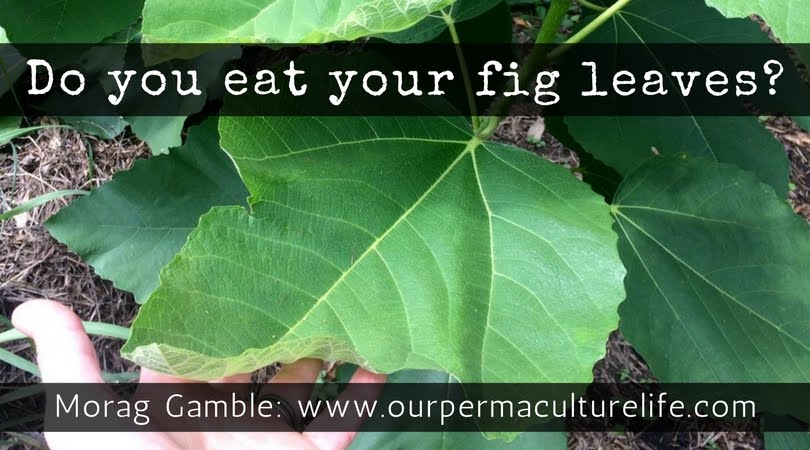
My fig tree (Ficus carica) is sprouting an abundance of soft large tender leaves at the moment. It’ll be a while until there are any figs ready, and to be honest, in this climate (subtropical), the amount of figs I can harvest is quite small.
I have placed the fig tree in my landscape design to be close to the chicken house. This way, everyday I see how the fruits are going and can harvest them before the birds.
My daughter and I love fresh figs and we delight eating the few we get right there and then in the garden. In actual fact, I don’t think a fig has every reached our house.
Anyway, I was standing there looking at this fig tree the other day and thinking how nice the new leaves looked. They certainly looked edible, but I have not tried them before, so I’ve gone and done some research. This is what I found.
- Fig leaves are well and truly edible.
- Fig leaves add a lovely coconut, walnut, vanilla flavour to food.
- Don’t bother with the really old ones – way too fibrous and bland.
- Fig leaves are a good source of vitamin A, B1, and B2. They also contain calcium, iron, phosphorus, manganese, sodium, and potassium.
- There are many health benefits from consuming fig leaves and drinking fig leaf tea: anti-diabetic, lower triglycerides, for bronchitis to name a few
- Take care with the sap when harvesting, it can irritate.
- The first record of fig leaves being used as a food wrap is in 3rd century BCE. Fig trees are thought to have originated in the middle east and first cultivated in Egypt. They flourish areas with a mediterranean climates – hot dry summers and mild winters. They are however found everywhere except Antarctica.
And here are 5 ways to use fig leaves:
- Make fig leaf tea. Dry fig leaves can be used as a tea just as you normally brew tea leaves. You can also use the fresh leaves. Boil them up for 15 minutes and strain.
- Cook up fig leaves in lightly salted water for 20 minutes or until tender, then use as a wrap or spinach green alternative.
- Use fig leaf as a wrap. The leaves add a great mediterranean flavour to food when wrapped and cooked. Fig leaves can be used to wrap rice and vegetables, or to wrap fish.
- Cook up a vegetable curry with big leaves in it. Remove the leaves at the end. The leaves add a lovely flavour.
- Leaves can also be added to slow cook stews or soups as a spinach alternative.
I would be very interested to hear what you know about eating fig leaves.
What is permaculture?
To learn more about permaculture check out my 4 part permaculture series and take a look at Our Permaculture Life youtube channel where I have uploaded over 100 films I have made in my permaculture garden and in conversation with others. Dive deeper into this blog too and you will find over 400 permaculture articles.
Now is such a great time to learn more about permaculture and consider making permaculture your way of life and livelihood too. To help with this, I offer two online permaculture courses:
- Permaculture Educators Program – Permaculture Design & Teaching Certificates
- The Incredible Edible Garden – permaculture gardening course
I also encourage you to support free permaculture education programs for women and youth in the global south through our registered permaculture charity, the Ethos Foundation.


